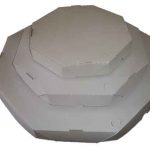As governing boards return normal business, hybrid board meetings are quickly becoming the normal. This new format allows nonprofit directors and trustees to attend meetings remotely, while allowing the attendance of in-person at a later time. This is an excellent alternative for boards of all sizes as it eliminates the need to accommodate quarantine times and travel restrictions. Hybrid board meetings can be challenging if they are not planned and executed properly.
A meeting’s success is largely dependent on the ability to effectively communicate between participants who are in person and those who are distant. It is essential to have a high-speed video conference system that allows both in-person and virtual participants to be heard clearly. It is recommended to use a dedicated audio speaker for the people in the room, and to offer remote attendees the option of sharing their screens to allow them to follow the conversation.
A clear agenda is important. This can help to keep the meeting focused and on point, which is an issue that could arise if meetings run for too long. Also, it is helpful to provide a break for those who attend in person, to help them re-energize themselves and remain productive throughout the meeting.
It is also a good idea have a designated facilitator at every meeting, especially during their explanation lively discussions. It is easy for in-person attendees to ignore their virtual colleagues and not notice the difference that occurs when some are physically present and others do not. Facilitators can help balance these differences and keeps the group focused on the most pressing issues.








